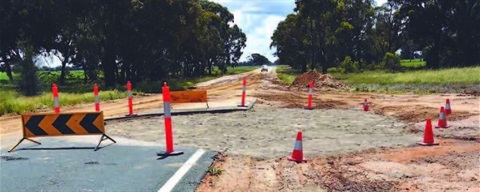Full steam ahead for flood recovery work
Published on 25 September 2025

The October 2022 floods left a trail of devastation throughout Loddon Shire, but the good news is almost all the recovery work has been, or soon will be, under way.
Work has begun on culverts near Boort, the first of the Flood Restoration Program for the 2025-26 financial year.
Tenders have been awarded for more works, with one large remaining package for the remaining work going out to tender in the next couple of months.
So residents will expect to see contractors on the ground around the shire over the next 12 months, and there are some interesting numbers behind the work.
About $22 million will be spent on the program and combined with a roads budget (maintenance and capital works) of about $11 million, that’s about $33 million on our road infrastructure, or about two-and-a-half times the amount Council will collect in total rates this year.
The extra funding comes from the Disaster Recovery Funding Arrangements (DRFA), a Federal-State Government program administered in Victoria by the Department of Transport and Planning.
A total of 675 projects were identified by Council for reimbursement under the DRFA, and about 130 had been completed by the end of the 2024-25 financial year.
Prior to the new financial year, the DRFA had reimbursed $4.6 million, while another $4.3 million of work had been done through a combination of insurance claims and other State Government funding.
Roads have long been identified by Loddon Shire residents as their number one priority for Council and the recent Community Satisfaction Survey reinforced that.
There were low scores for unsealed and sealed local roads likely due to ongoing flood recovery works and DRFA claim processes.
Loddon Shire Mayor Dan Straub said Council had put in a lot of hard work behind the scenes advocating for flood recovery funding and that was now paying off.
“It’s great to see these works going on, and they will continue to go on for much of the next 12 months,” Cr Straub said.
“I know that ratepayers have been frustrated by what has seemed like a slow process at times but we are well on the way now.
“We also know how much our residents value a safe and fit-for-purpose road network and we have been focused on delivering that.”
Much of the flood recovery work involves gravel resheeting, or adding gravel to unsealed roads, while stabilisation and shoulder reconstruction will also feature heavily among a wide variety of work being done.